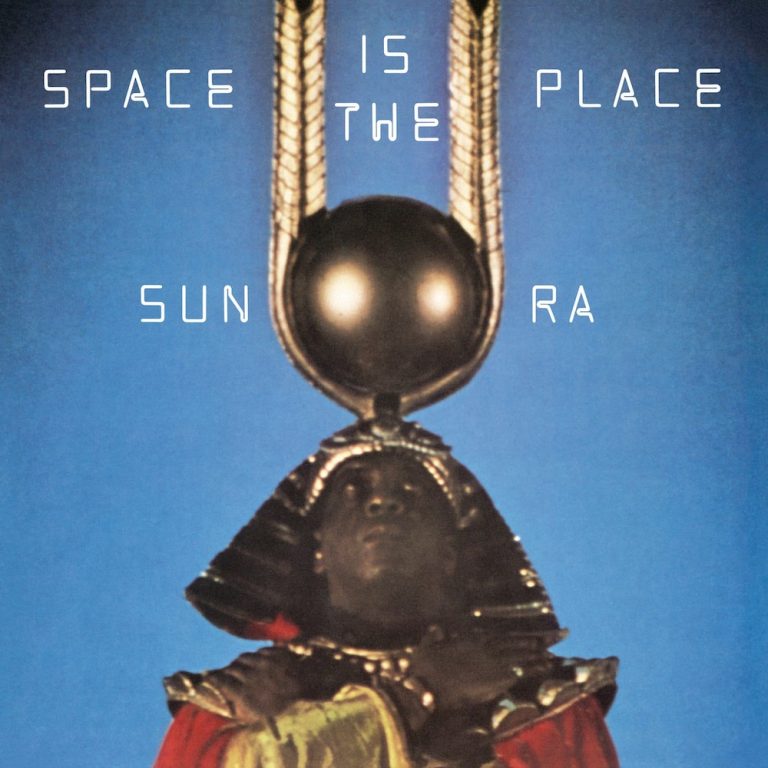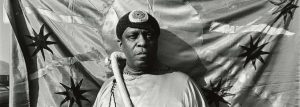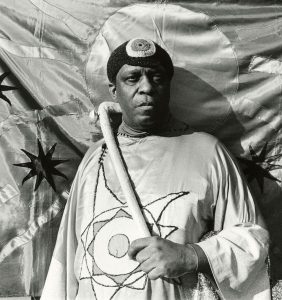Despite releasing music from many of the legends of free jazz and the avant-garde, there was one towering figure of that scene that producer Ed Michel wanted Impulse! to sign: Sun Ra. That came with its very own challenges though as it was hard to imagine an independent label more independent that Sun Ra’s El Saturn.
Nevertheless, in 1972, he set up a meeting between Sun Ra, his manager Alton Abraham and executives at ABC, the parent company of Impulse! at the time. The label reps presented a contract.
“Team Saturn took it away for study and brought a revised version back the next day,” Michel tells me. “They simply rewrote the agreement, reversing all the terms, so that Saturn and ABC exchanged rights and percentages. Very Cosmic. But, sadly, not well received by executives at ABC.”
But to Michel’s credit, he didn’t back up from his plans, but adjusted his strategy. Instead of a recording artist deal with Sun Ra, he negotiated a licensing agreement for past and future El Saturn LPs to be released and distributed through Impulse! and ABC.
In the end, nine Sun Ra albums emerged through this deal in the early 1970s, including “Angels and Demons at Play” from 1960 and “The Magic City” from 1975. It also resulted in a brand new recording for Impulse! – the album “Astro Black”, co-produced by Ed Michel and Alton Abraham, released in 1973.

SUN RA Space Is The Place
Available to purchase from our US store.The connection was solidified when Michel was asked to produce Sun Ra’s Arkestra. This included the album ”Space Is The Place.” Originally released on Blue Thumb Records in 1973 (which was sold to ABC in late 1974), the LP was re-issued by Impulse! in 1998 as interest in Sun Ra increased following his death in 1993. As well as probably being his most famous work, “Space is the Place” is considered one of his more accessible LPs and one of the true pivotal spiritual jazz albums of the 1970s.
In one of his mind-bending interviews, the enigmatic Chicago bandleader described his concept of space music that he realized on that album: “Somehow man is trapped into playing roles into the haven or heaven of the inner void, but I am not in that. That particular aim/goal does not interest my spirit-mind and because of that it moves out to something else where the word space is the synonym for a multi dimension of different things.”
As author John Szwed explains in his book “Space Is the Place: The Life and Times of Sun Ra”, for the visionary musician “message was ambiguous. Humorous, revised and renewed”. Ra’s concepts on subjects ranging from spirituality, cosmology, Egyptian mythology, mathematics, and black history were as challenging as his music.
“He scattered ideas,” Szwed wrote. “And his music was like that as well, melodies rising up from surprising sources, only to be discarded or alternated with others, or made up of brief fragments, which nonetheless seem to form unto polyphony.”
Featuring the Arkestra at the height of their powers including the ‘Space Ethnic’ voices of a quartet of singers led by June Tyson, “Space is the Place” was recorded between October 19 and 20, 1972, at Streeterville Recording Studio, Chicago and engineered by Baker Bigsby.
Like all Sun Ra recording sessions, it was anything but conventional. “Fortunately, we were able to borrow small submixers from a film-sound facility, so we could deal with the fact that there were four complete drum sets in use, all of the saxophonists required multiple-miking, everybody functioned as a percussionist… and there were dancers moving through the studio at all times,” Ed Michel recalls.
The album opens with Sun Ra’s most famous recording, the incredible 21-minute title track. Built around Ra’s celestial Farfisa organ, Danny Thompson’s repeated baritone sax hook, a hypnotic riff by bass guitarist Pat Patrick, and June Tyson’s cosmic soul vocals weaving around band members’ refrains, while a barrage of free jazz screeches assault the senses, the epic and anthemic “Space is the Place” takes up the whole of Side One of the album.
Side Two opens with “Images” featuring Sun Ra on acoustic piano and a big band horn section serving as a reminder of the bandleader’s roots in the swing era that never left him. Back on the Farfisa organ and backed by a languid horn section, “Discipline 33” is the kind of minor key exotica that Sun Ra often explored. After the free jazz torrent of “Sea of Sound”, the album closes with “Rocket Number Nine” with Ra and the Arkestra at their most playful on a version of a composition that first appeared on the 1969 album “Interstellar Low Ways”.
Ed Michel can never forget the experience of being in the studio with the great man. “As with all the Sun Ra events, nothing was what I expected, and nothing was not illuminating,” he says. “During the mix sessions, Mr. Ra fell asleep – he snored really loud when he awoke, the tape stopped. He surveyed the room and noted, ‘You Earth people sleep too much.’”

SUN RA Space Is The Place
Available to purchase from our US store.Andy Thomas is a London based writer who has contributed regularly to Straight No Chaser, Wax Poetics, We Jazz, Red Bull Music Academy, and Bandcamp Daily. He has also written liner notes for Strut, Soul Jazz and Brownswood Recordings.


